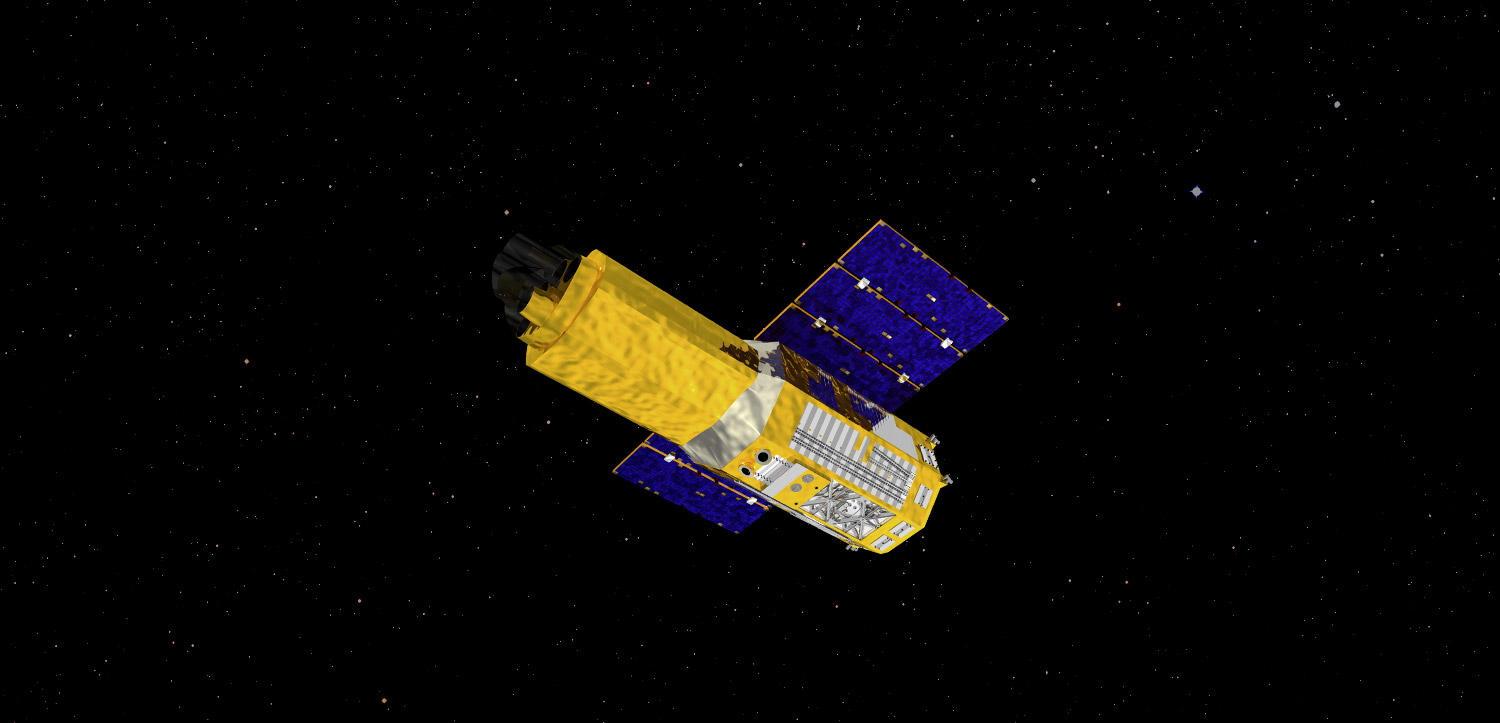Suzaku

The Suzaku satellite before vibration tests. (Credit: NASA/ISAS/JAXA)
Suzaku was the fifth in a series of Japanese X-ray astronomy observatories, once again with NASA participation. It carried lightweight X-ray mirrors developed and built at NASA's Goddard Space Flight Center. NASA also took the lead in developing the X-ray spectrometer based on microcalorimeter technology (however, see below). Suzaku is a versatile observatory that studied X-rays from celestial objects such as black holes, supernova remnants and clusters of galaxies.
The satellite was developed at Japan's Institute of Space and Astronautical Science (ISAS), which is part of the Japan Aerospace Expolration Agency (JAXA). In addition, various Japanese universities collaborated with ISAS and the Massachusetts Institute of Technology to develop an X-ray imaging detector. The Japanese also developed an instrument to detect higher energy X-rays.
While under development, the satellite was known as Astro-E2 – the name signifying that it was the recovery mission for Astro-E, which did not achieve orbit during launch in Feburary 2000. Astro-E2 was successfully launched from Japan in July 2005, and renamed to Suzaku once it attained orbit. Suzaku is the Japanese term for a divine, red sparrow-like bird in Chinese legend which provides protection from evil and brings good fortune. In Japanese culture, it also became the guardian of the South.
Fully deployed in space, Suzaku was 6.5 m tall and 1.85 m wide.

An illustration of Suzaku in space. (Credit: ISAS/JAXA)
Instrumentation
- The X-ray Spectrometer (XRS) was to be used for the first time in Earth orbit to measure X-ray energies to very high precision; unfortunately, XRS prematurely lost all its liquid helium before observations began.
- The X-ray Telescope (XRT) focuses X-rays – which isn't easy to do – using light-weight telescopes.
- The X-ray Imaging Spectrometer (XIS) instruments provide imaging and spectroscopy of low-energy X-rays.
- The Hard X-ray Detector (HXD) provides high energy X-ray coverage for Suzaku.
Science Areas
Suzaku studied a wide array of objects, but these are among the topics of particular interest:
- Strong gravity around black holes: Suzaku was able to observe a particular emission line that is emitted close to a black hole to give astronomers a unique look at the details of twisted space and warped time near a black hole. Read more in this NASA release: Scientists Nudge Closer to the Edge of a Black Hole
- Identifying the composition in supernova remnants: Suzaku was able to identify a specific chemical signature in supernova remnants that helped astronomers form a clearer picture of the composition of the star before it blew up. Read more in this NASA release: Suzaku 'Post-mortem' Yields Insight into Kepler's Supernova
- Hot gas and dark matter in clusters of galaxies: Suzaku mapped the X-ray emission of hot gas in clusters of galaxies to give astronomers the clearest picture to date of the size, mass and chemical content of a these gravitationally-bound collections of galaxies. Read more in this NASA release: Suzaku Shows Clearest Picture Yet of Perseus Galaxy Cluster
Published: July 2005
Text Reviewed: September 2018


